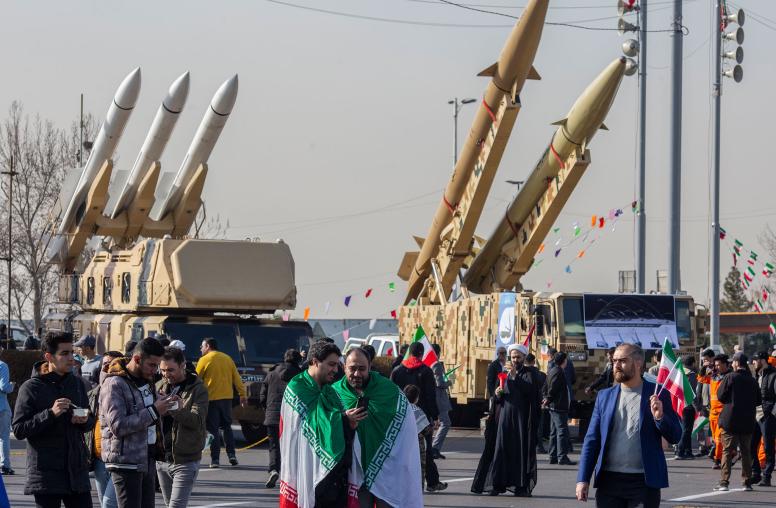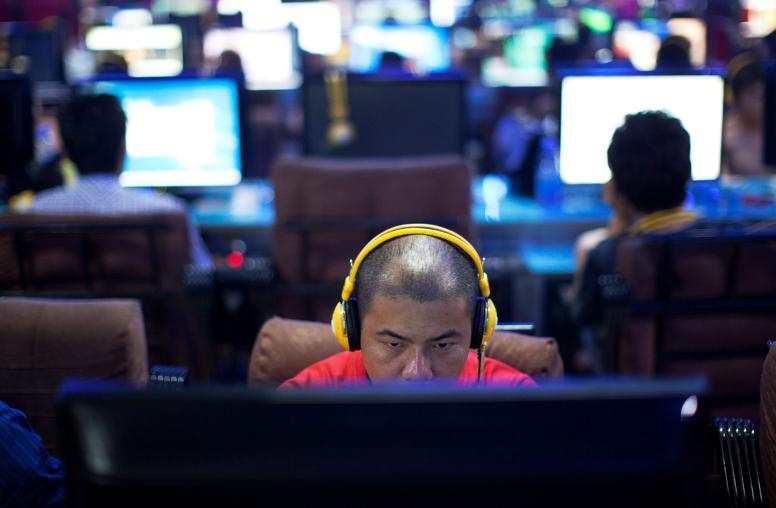The Persistent Threat of Nuclear Crises Among China, India and Pakistan
Southern Asia’s strategic stability is getting harder to manage because of geopolitical changes and evolving military technologies.
Southern Asia — India, Pakistan and China — is the only place on earth where three nuclear-armed states have recently engaged in violent confrontations along their contested borders. As a USIP senior study group report concluded last year, the problem of nuclear stability in Southern Asia is getting harder to manage because of geopolitical changes, such as rising India-China border tensions, as well as evolving military technologies, including growing nuclear arsenals and more capable delivery systems. Unfortunately, in the time since that senior study group completed its work, little has happened to revise its worrisome conclusion or to prevent the most likely triggering causes of a nuclearized crisis in Southern Asia. To the contrary, there are some good reasons to fear that the situation in Southern Asia has even deteriorated over the past year.

No One Wants Nuclear Escalation — But it Can Still Happen
To be clear, just because states invest in nuclear weapons and delivery systems does not mean that a crisis or war is imminent. Leaders in China, India and Pakistan have always viewed their nuclear arsenals primarily as tools of deterrence, less for practical warfighting than to convince adversaries of the extraordinary costs that a war would risk. Nor do any of the region’s leaders take their nuclear programs lightly; all feel tremendous incentives to keep their arsenals safe and secure and to build systems of command, control and communications intended to prevent accidents, unauthorized use or theft.
Nevertheless, because even a single nuclear detonation could be massively destructive, U.S. policymakers have an obligation not to accept these sorts of logical assurances passively or uncritically. Accidents do happen. India’s misfire of a Brahmos missile test into Pakistan last year proved that point perfectly. No matter how well designed, nuclear systems are complicated and involve the potential for human or technical error. When something does go wrong, overreaction by opposing forces is less likely when they have a greater degree of confidence in, and knowledge of, the other side. Reliable and secure communications — in the form of hotlines — can help, but only to the point that they are actually used in a timely manner. Apparently, India failed to do so during the Brahmos incident.
Fear, hatred and other emotions can cloud human judgment, especially in the heat of a crisis when information is imperfect and communication difficult. Reflecting on his own experience of crisis management in Southern Asia, former secretary of state Mike Pompeo recently wrote that he does “not think the world properly knows just how close the India-Pakistan rivalry came to spilling over into a nuclear conflagration in February 2019.” The question — for Pompeo and current U.S. policymakers — is what more they are doing now to prepare for the next crisis.
Fortunately, a February 2021 cease-fire agreement between India and Pakistan holds, supplemented at times by a widely rumored “backchannel” dialogue between New Delhi and Islamabad. Then again, it is a measure of the low level of our collective expectations for India-Pakistan relations that the bare agreement not to actively shoot artillery shells across their border and to participate in sporadic, secret talks is considered progress.
The Terrorism Tinderbox
A return to serious India-Pakistan crisis could be just one terrorist attack away. Not even when Pakistan suffered devastating floods last summer could leaders in Islamabad and New Delhi create sufficient political space to open basic commodity trade. Hostile rhetoric is high, and there is reason to anticipate it could get far worse over the coming year as national leaders on both sides prepare for elections. Indian Prime Minister Narendra Modi has learned he can whip up domestic political support from tough talk and cross-border retaliation. In Pakistan, neither civilian nor army leaders can afford to look weak in the face of Indian attacks, especially when they face jingoistic (if transparently opportunistic) criticism from ousted prime minister Imran Khan.
The prospect of anti-Indian terrorism is also growing. The Taliban regime in Afghanistan shows no greater commitment to eliminating terrorist safe havens than it did in the 1990s, and Pakistan’s will (and capacity) for keeping a lid on cross-border terrorism will be tested as it faces heightened security and economic pressures at home. In addition, India’s repression of its Muslim minority community, especially in Kashmir, is simultaneously a reaction to past anti-state militancy and nearly guaranteed to inspire new acts of violence.
No matter the specific cause or circumstances of anti-Indian militancy, Modi’s government is likely to attribute culpability to Pakistan. That, in turn, raises the potential for an emotionally charged crisis that could, under the wrong circumstances, spiral into another India-Pakistan war.
Nor can Pakistan afford only to worry about its border with India. Relations between Islamabad and Kabul have deteriorated drastically ever since the Taliban swept back into power. Rather than controlling Afghanistan through its favored militant proxies, Pakistan is suffering a surge in violence on its own soil, most recently the devastating bombing of a police mosque in Peshawar claimed by the anti-state Tehreek-e-Taliban Pakistan. Such violence, along with national political turmoil, environmental calamity and economic crisis, will raise concerns among some in the United States about threats to the safety and security of Pakistan’s nuclear enterprise. Sadly, that will probably lead Pakistan’s Strategic Plans Division — the guardians of its nuclear arsenal — and other Pakistani military leaders to fear a phantom threat of American military intervention rather than to address actual causes of the Pakistani state’s fragility.
India-China Tensions Rise
Events along the contested border between India and China hardly inspire confidence that New Delhi and Beijing have found a path back to normal relations after their bloody border skirmishes of 2020. To the contrary, the prospects of rapid military escalation have grown, principally because both sides have positioned greater numbers of more lethal forces close to the border. Before 2020, relatively small, unarmed Chinese and Indian patrols routinely risked coming into contact as they pressed territorial claims on the un-demarcated border. This was dangerous, but extremely unlikely to escalate rapidly into a serious military encounter. In early December 2022 hundreds of Chinese troops attacked an Indian camp in what could not possibly have been an unplanned operation. With tens of thousands of troops stationed not far away, conventional military escalation is far more plausible than it was just a few years ago.
Although there is still a long way between remote mountain warfare and a nuclear crisis, at least some Indian security officials anticipate a future of more routine border violence as troops on both sides become more entrenched. China and India are also jockeying in the Indian Ocean, where China’s increasing naval presence and influence with India’s smaller neighbors feed Indian insecurities and encourage New Delhi to seek countervailing defense ties with Quad partners (Japan, Australia and the United States) as well as other naval powers, like France.
Against this backdrop of tensions, China’s growing nuclear, missile and surveillance capabilities will look more threatening to Indian nuclear defense planners. New Delhi may even come to fear that China is developing a first strike so devastating that it would effectively eliminate India’s retaliatory response and, as a consequence, diminish the threat of its nuclear deterrent. In response, India could seek to demonstrate that it has thermonuclear weapons capable of destroying Chinese cities in one blow as well as more nuclear submarines capable of evading China’s first strike.
A ‘Cascading Security Dilemma’
Not only would those Indian moves raise serious policy questions for the United States, but they would demonstrate the region’s “cascading security dilemma,” by which military capabilities intended to deter one adversary tend to inspire dangerous insecurities in another. When India arms itself to deter China, Pakistan perceives new threats from India and will likely pursue enhanced capabilities of its own. In a worst-case scenario, Southern Asia could be entering an accelerated nuclear arms race in which uneven waves of new investments in capabilities and delivery systems will alter perceptions of deterrence and stability in dangerously unpredictable ways.
All told, U.S. policymakers have at least as many reasons for concern about strategic stability in Southern Asia as when USIP launched its report last spring. Old triggers for escalation, like terrorist attacks against India, persist, while newer storms are brewing. As that earlier report explained, Washington cannot solve Southern Asia’s troubles alone, but neither can it afford to stand aloof or to downplay their seriousness.



